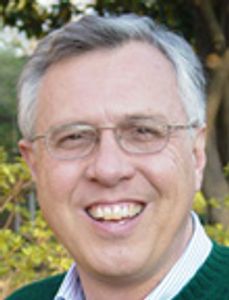
A long scholarly odyssey by a Catawba College professor will end Friday, March 3. Historian Gary R. Freeze will be honored with a ceremony in the Corriher-Linn-Black Library on campus to mark the completion of his local heritage study, "The Catawbans," a three-volume chronicle of the history of Catawba County and the Greater Hickory area.
The nationally-acclaimed work is perhaps the most exhaustive treatment of any American locality outside of major cities. The narrative starts in the era of colonization in 1747 and finishes with developments in industrialization in 1992, as globalization was about to arrive. The three volumes—"Crafters of a North Carolina County" (1995), "Pioneers in Progress" (2003), and "Boomers and Bypasses" (2016)—total more than 1,500 pages and a half-million words.
"I sort of feel like I've been over Niagara Falls in a barrel, taken all kinds of bounces, lived through quite an adventure, and got to tell all about it as I went along," Freeze observes. The most daunting part of the work, he thinks, was the reading of most of the issues of a Hickory daily newspaper in the twentieth century. "A month of news could be read, at best, in an hour, so rounding, I logged somewhere around 1,200 hours in front of a microfilm reader."
"The project grew out of a decision by Catawba County to properly celebrate its 150th anniversary in 1992," explained Sidney Halma, director of the effort since its inception. At the time Freeze started research, in the summer of 1990, Halma was curator of the Catawba County Historical Museum in Newton. "As Gary found out more and more about our county, the effort grew from one short volume to more than a half dozen, and the scope of the work was extended into the third decade. It has been quite the labor of love for all of us involved."
The project was collaborative at all times. Its success depended upon a highly unusual public-private partnership, involving county commissioners, municipal officials, and citizens from all walks of life.
"People from all parts and portions of the county were partners in these ventures," Freeze notes, "from legislators and Rotarians to the ladies who work in the many lunch counters I frequented over the years. Everyone shared in the pride that went into the chronicling of their American story."
Freeze has had close ties to the team that has been with him most of the way. In addition to Halma, Alex Floyd, curator of the local history room of the Catawba County Library, logged thousands of hours as a research assistant, and Sylvia Kidd Ray, a local journalist, thought of hundreds of families, events, and ideas that would need to go into the text. "Without them, it would have taken twice as long, been half as interesting, and three times more exhausting," he noted.
"The Catawbans" project has taken the writing of county history to a new level in North Carolina. "No one in the history of our state has written three volumes of local history, telling a story that includes the contemporary period," observed Kevin Cherry, director of the North Carolina Office of Archives, History, and Parks. UNC-G historian Christopher A. Graham has argued that Freeze's work is "notable for its attempt to bridge the canyon" between academic and popular themes.
The books, therefore, have a versatile appeal at different levels for those interested in local history. "Gary's respectful treatment of all families, from the grandest to the most common, has advanced the cause of genealogy. He has helped us understand how interconnected we are, even at the grassroots level," observed Gretchen B. Witt, current curator of the RPL local history room.
While compiling the trilogy, Freeze also completed more than a half dozen "institutional" studies, writing about a Victorian Era resort hotel, the county's hospital, a former farm life school, a congregation, and the City of Newton. "In many ways, these smaller books are embellishments of the greater themes I found in the county-level research," Freeze noted. Some of the research went into several articles Freeze published in academic outlets. This year, Freeze will be part of an anthology on North Carolina's role in World War One, focusing on the pro-German sentiment in Lutheran counties like Catawba and Rowan.
Some of the stories also found their way into Freeze's eighth-grade textbook on North Carolina history, culture, and economy. "North Carolina: People, Places, and Progress," an imprint of Clairmont Press, is now out in its second edition, including a highlighting of the nonwoven fabrics industry that has come to Catawba County in the last several years.
Except for some small consulting—a script for the welcome video at a new visitor center in the town of Maiden, revisions of work on the local Methodist camp meeting grounds—Freeze is moving wholly, albeit laterally, to another notable North Carolina locale. "I'm writing a history of Mayberry; the town, not the show. I'll be studying what I call 'the Mayberry metaphor' in the context of our state's current political debates," he revealed.
There will be a two-part celebration on Friday, March 3. Catawba College will officially archive all the works from the effort and honor Freeze at a ceremony at 3:30 p.m. in the college library. Later, Freeze will be part of Friday Night Out in downtown Salisbury. He will be at South Main Book Company from 6:30 to 8:00 p.m. to sign books and will give a talk about the third volume at 7:00. The public is invited to both events.
